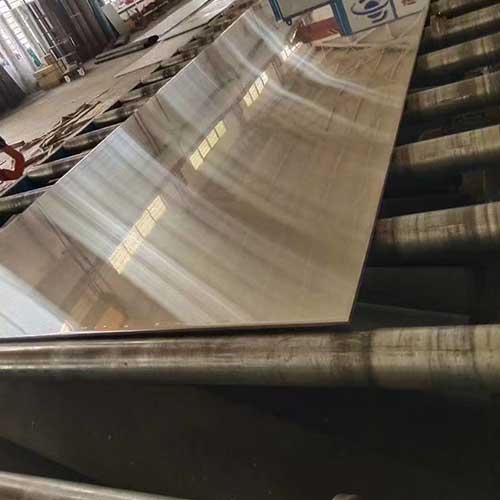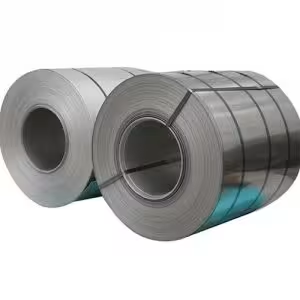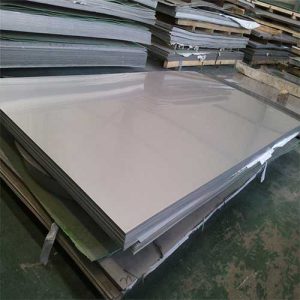Welcome to My Blog!
Before we dive into the content, I’d love for you to join me on my social media platforms where I share more insights, engage with the community, and post updates. Here’s how you can connect with me:
Facebook:https://www.facebook.com/profile.php?id=61565500692293
Now, let’s get started on our journey together. I hope you find the content here insightful, engaging, and valuable.
Table of Contents
Introduction

Stainless steel metal plates are sheets of stainless steel that are known for their strength, workability, and resistance to staining and corrosion. These characteristics make them suitable for a multitude of applications where other materials might not stand up to the same level of performance. Understanding the advantages and limitations of stainless steel metal plates compared to other materials is crucial for engineers, architects, and designers.
Understanding Stainless Steel Metal Plates
To make an informed comparison, it’s essential to first understand the properties that define stainless steel metal plates.
Composition and Properties
Stainless steel metal plates are alloys containing iron, chromium, and often nickel and molybdenum. The chromium content provides a protective oxide layer that resists corrosion, while the addition of nickel and molybdenum enhances the steel’s resistance to staining and acid attack.
Processing and Finishes
Stainless steel plates can be cold-rolled or hot-rolled, and they are available in various finishes, including mill finish, #4 brushed, #8 mirror finish, and more. These different processes and finishes affect the plate’s surface texture, reflectivity, and suitability for specific applications.
Cost and Availability
Stainless steel metal plates are more expensive than traditional carbon steel due to their alloy content and manufacturing processes. However, their cost-effectiveness comes into play when considering their longevity and low maintenance requirements.
Applications of Stainless Steel Metal Plates
Stainless steel metal plates are used in a variety of applications where their unique properties are beneficial.
Construction and Architecture
In construction and architecture, stainless steel metal plates are used for cladding, roofing, and structural components due to their strength and resistance to weathering.
Automotive and Transportation
In the automotive industry, stainless steel metal plates are used for exhaust systems, trim, and other components that require high corrosion resistance.
Food Processing and Sanitation
In food processing, stainless steel metal plates are essential for their hygiene and resistance to chemicals, making them ideal for equipment and work surfaces.
Decorative and Artistic Uses
Stainless steel metal plates are also used in decorative applications for their aesthetic appeal, durability, and ability to be shaped and finished in various ways.
Comparing Stainless Steel Metal Plates to Other Materials
When selecting materials for a project, it’s important to compare the properties and performance of stainless steel metal plates to other options.
Durability and Corrosion Resistance
Stainless steel metal plates offer superior corrosion resistance compared to carbon steel and aluminum, making them ideal for applications in harsh environments.
Strength and Weight
Stainless steel metal plates provide a good strength-to-weight ratio, similar to aluminum but with greater resistance to denting and scratching.
Thermal and Electrical Conductivity
While stainless steel has lower thermal and electrical conductivity than copper or aluminum, its resistance to corrosion often outweighs this disadvantage in many applications.
Aesthetics and Finishing
Stainless steel metal plates offer a modern, sleek appearance that can be polished to a high gloss or given a brushed finish, providing design flexibility that many other materials cannot match.
Stainless Steel Metal Plate Comparison Table
To provide a clearer picture of the comparison, here’s a table outlining some key properties of stainless steel metal plates and other common materials:
| Material | Corrosion Resistance | Strength | Weight | Thermal Conductivity | Cost | Common Applications |
|---|---|---|---|---|---|---|
| Stainless Steel | High | High | Moderate | Low | High | Construction, Automotive, Food Processing |
| Carbon Steel | Moderate | High | Heavy | Moderate | Moderate | Structural, Industrial |
| Aluminum | Moderate | Moderate | Light | High | Low | Aerospace, Electrical Conductors |
| Copper | Low | Moderate | Heavy | High | High | Electrical Wiring, Plumbing |
| Titanium | Very High | Very High | Light | Moderate | Very High | Aerospace, Medical Implants |
This table provides a snapshot of how stainless steel metal plates compare to other materials in terms of key properties that are often considered in material selection.
Making the Right Material Choice

When choosing between stainless steel metal plates and other materials, consider the specific requirements of your project, including the environment, expected lifespan, and budget.
Environmental Factors
Consider the environment in which the material will be used. Stainless steel metal plates are excellent for coastal or industrial areas where corrosion is a concern.
Longevity and Maintenance
Stainless steel metal plates offer a long service life with minimal maintenance, which can be more cost-effective in the long run compared to materials that require frequent replacement or repair.
Budget Constraints
While stainless steel plates may have a higher upfront cost, their durability and low maintenance can make them a cost-effective choice over time, especially in applications where failure or corrosion is not an option.
Aesthetic Considerations
For projects where aesthetics are important, stainless steel plates offer a modern, clean look that can enhance the visual appeal of a design.
Conclusion
Stainless steel plates offer a unique combination of properties that make them suitable for a wide range of applications. Their corrosion resistance, strength, and aesthetic appeal often outweigh the benefits of other materials, especially in challenging environments. By understanding how stainless steel metal plates compare to other materials, you can make informed decisions that will enhance the performance and longevity of your projects.
FAQ
Q: What are the main advantages of using stainless steel plates?
A: The main advantages include high corrosion resistance, strength, and aesthetic appeal. They also offer a long service life with low maintenance requirements.
Q: How do stainless steel plates compare to carbon steel in terms of cost?
A: Stainless steel plates are generally more expensive than carbon steel due to their alloy content and manufacturing processes. However, their durability and low maintenance can make them more cost-effective in the long run.
Q: Are stainless steel plates difficult to work with?
A: Stainless steel plates are relatively easy to work with using standard metalworking techniques. They can be cut, shaped, and welded, making them suitable for a variety of fabrication processes.
Q: Can stainless steel plates be used in outdoor applications?
A: Yes, stainless steel plates are excellent for outdoor applications due to their resistance to weathering and corrosion. They are often used for cladding, roofing, and structural components in construction and landscaping.
Q: What finishes are available for stainless steel plates?
A: Stainless steel plates can be provided in a variety of finishes, including mill finish, brushed, mirror, and more. The choice of finish depends on the specific application and desired aesthetic.




